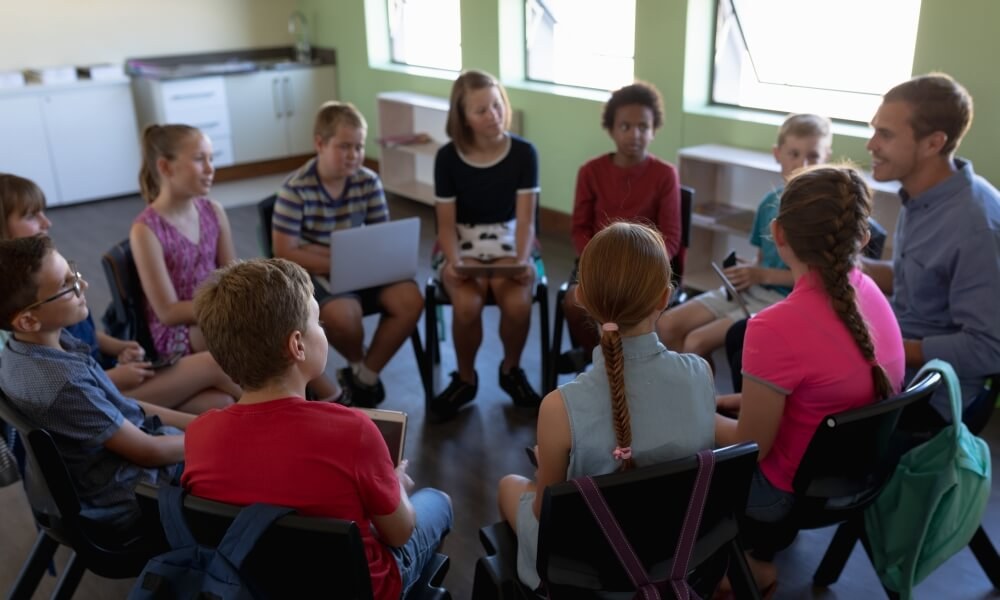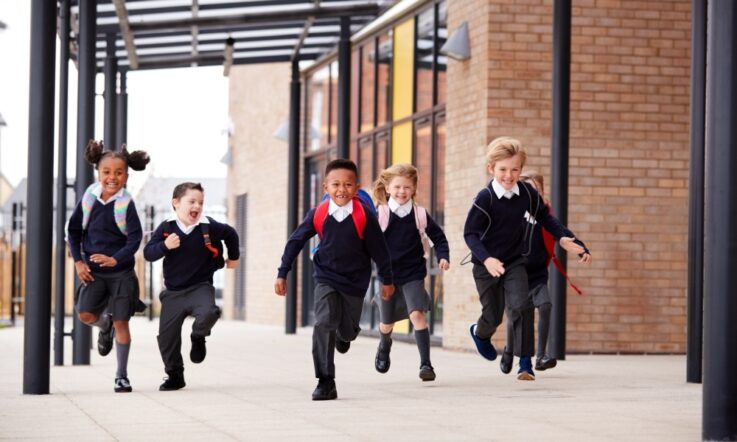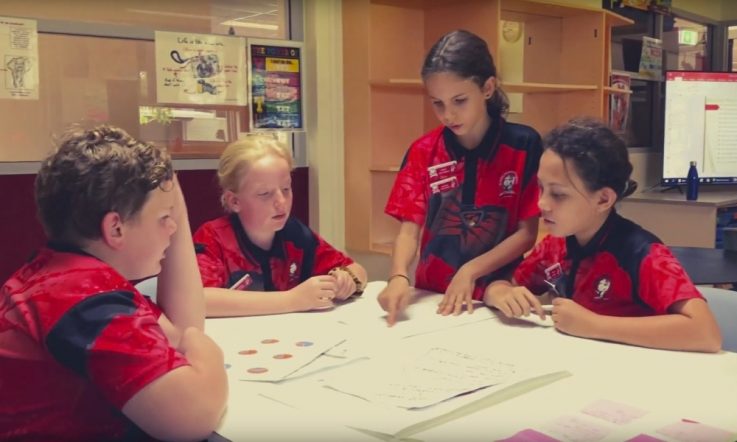How are education systems supporting child empowerment? That’s the key question explored in a new international report that reviews the literature and shares examples of effective policy and practice in different countries, and the challenges that exist.
Released by the OECD last month, What Does Child Empowerment Mean Today? Implications for Education and Well-being draws on feedback from a questionnaire to policymakers in 23 education systems, including Australia, Canada, England, Finland, New Zealand, Estonia and Japan.
‘Children in decades past have been primarily viewed as vulnerable individuals in need of protection. Today, policy and research spheres increasingly view children as autonomous, active agents of change, who have the expertise to contribute to decision-making processes and contribute positively to society,’ the report notes.
‘Now is a good moment to take stock of how 21st century children are already taking an active role in shaping their own lives, their communities and their education systems and how education systems can support them in doing so in the years ahead.’
The report looks at empowerment in relation to several themes, including digital inequalities and risks, media education and engagement, and the impact of COVID-19 on emotional wellbeing and physical activity.
Digital inequalities and risks
The report warns some students risk being left behind by digital skills gaps. In the questionnaire, education systems highlighted inequalities in digital skills and uses as one of the most pressing policy challenges.
‘An important measure that clearly needs to be adopted in digital skills strategies is building the capacity of adults who can provide support and guidance to children,’ it recommends, adding that teachers are important players in mitigating the skills gap.
Strategies implemented in other countries to develop teacher usage and expertise include specialised training for educators in Italy, introducing teachers specialised in digital competence to primary schools in Luxembourg, and a program in Spain focused on developing teacher skills that also aims to certify the degree of their digital competence.
The report says involving children in developing, designing and implementing digital skills strategies – and ensuring these opportunities are available to all, including those from disadvantaged or underrepresented backgrounds – is one way to empower them. ‘Research shows that children are keen to be consulted about the digital skills and digital literacies they want to develop, and to determine the ways these should be delivered.’
Media education and engagement
In analysing the system response to this theme, media education is taken as a combination of policies and practices helping children ‘to be more resilient, seize opportunities and minimise the risk of harm from media engagement’.
The report says there is widespread inclusion of media literacy in Initial Teacher Education (ITE) programmes, but there are gaps elsewhere. For example, it points out that algorithms dominate children’s experiences of media. However, data from the questionnaire show only 43% of 10 teachers are taught in their ITE about how to educate students on algorithms, and only 57% receive ongoing professional development in this area.
‘As such, media provides both opportunities and risks to individuals searching for a stable personal narrative. An important part of identity development is finding belonging within a given group, which can foster a sense of empowerment,’ it notes, adding key challenges for schools are how to support children in their identity formation, and further empower them by bringing their cultural knowledge of media into the classroom.
Impact of COVID-19
The questionnaire responses showed many of the 23 countries are already implementing policies aimed at creating safe and inclusive school communities, and in turn helping to create empowering environments (for both students and teachers).
In relation to physical activity, 50% of students in the PISA 2022 assessment cycle said they missed sports and other physical activities during the pandemic lockdowns that would have been usually organised by their school. Slovenia is highlighted a top performer in meeting physical activity needs of children – more than 80% are estimated to be reaching World Health Organisation daily recommended levels. In schools, from late primary to secondary all PE classes are taught by teachers with a university degree, there are national standards for facilities and equipment (for example, all schools are required to have at least one fully equipped sports hall and outdoor facilities), and all Slovenian schools have physical activity policies.
On the wellbeing side of things, the report notes that schools ‘serve as an integral part of the social fabric in children’s lives, contributing to their psychological, social and academic development … Supportive social relations can be empowering for children, motivating them to engage in both in- and out-of-class activities, perform to the best of their abilities and enhance their enthusiasm for learning.’
It says this post-pandemic pause is a great opportunity to involve students in decision-making and reimagining what school wellbeing policies could be.
Examples of student participation at a systems level
In Iceland, all compulsory schools are required to have a school council, in the Netherlands every school has a participation council where parents and students have a say, and in Sweden student unions must be consulted on matters such as curriculum and syllabus suggestions and changes.
In Ireland, primary and post-primary students were consulted about the development of the Digital Strategy for Schools. In second level education (students aged 12 to 18) the country’s National Council of Curriculum and Assessment is now required to include the President of the Irish Second Level Students’ Union (ISSU) on its Council. ISSU is a national representative body for school students – run by students.
Ensuring participation is effective
The report also shares guidance on how schools can ensure student participation is effective, not just ‘tick-box’ or ‘tokenistic’. It says a model developed by Laura Lundy (2007) is being used as a framework for reference in some countries (including Ireland and Denmark). The model says 4 elements must be in place – space, voice, audience and influence:
- Space: Safe and inclusive spaces.
- Voice: Provide appropriate, child-friendly information about the issue, enough time, and resources to facilitate sharing (for example, puppets or drawings).
- Audience: Actively listening (including responding to non-verbal cues).
- Influence: Taking children’s perspectives seriously and acting on them.
‘Teachers and school leaders are key players in ensuring students are listened to, that their opinions hold weight, and to a large extent they can be the gatekeepers of participatory approaches.’
References
Lundy, L. (2007). ‘Voice’ is not enough: conceptualising Article 12 of the United Nations Convention on the Rights of the Child. British Educational Research Journal, 33(6), 927-942. https://doi.org/10.1080/01411920701657033
OECD. (2024). What Does Child Empowerment Mean Today?: Implications for Education and Well-being. Educational Research and Innovation. OECD Publishing. https://doi.org/10.1787/8f80ce38-en.
This article includes an overview of the Lundy model, which is being used as a framework for effective student participation in some OECD countries. With a colleague or group of colleagues, choose one of the 4 elements to explore further in relation to your own student cohort or whole school context. What are you already doing well in this area? Are there any areas for improvement?



